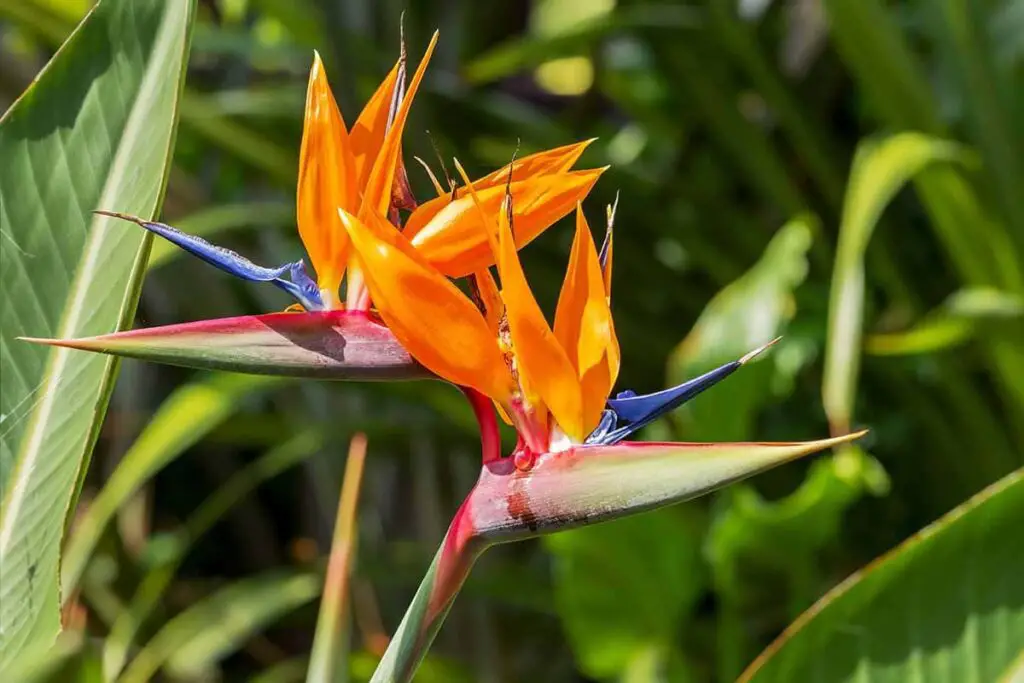The Birds of Paradise plant, scientifically known as Strelitzia reginae, is renowned for its vibrant, crane-like flowers that are reminiscent of tropical birds in flight. This exotic plant, originating from South Africa, not only enhances the aesthetics of your garden or indoor space but also thrives with appropriate care, particularly through effective pruning techniques. Here, we delve into the essential practices for maintaining the health and enhancing the beauty of your Birds of Paradise through strategic pruning.
Understanding the Growth Pattern of Birds of Paradise
Before embarking on the pruning process, it’s crucial to comprehend the growth characteristics of the Birds of Paradise. This plant grows from a rhizomatous root system, producing clumps of stiff, green leaves that can reach up to 6 feet tall in outdoor environments. The leaves are broad, glossy, and banana-like, with flowers emerging on a long stalk. Recognizing these traits is key to effective pruning, as it informs the timing and method of pruning to promote flourishing blooms and robust health.
Optimal Timing for Pruning
Timing plays a pivotal role in pruning Birds of Paradise. The best time to prune is late winter or early spring. This period just before the growth season ensures that the plant will have ample time to heal and produce new growth that can result in spectacular flowering in the upcoming season. Avoid pruning during the fall or midwinter, as the plant is less active and healing may be slower, potentially exposing the plant to diseases.
Techniques for Effective Pruning
- Removing Dead or Damaged Leaves: Begin by removing any foliage that is dead, damaged, or diseased. These leaves can drain energy from the plant and invite pests or fungal infections. Use clean, sharp shears to make clean cuts, which help in faster healing.
- Thinning for Light and Air Circulation: It’s beneficial to thin out the plant to allow light and air to reach the inner parts of the clump. This prevents the development of mold and mildew caused by excessive moisture, common in dense foliage. Remove some of the older outer leaves at the base to enhance air circulation and light exposure.
- Cutting Back Flower Stalks: After the flowers have faded, cut the flower stalks back to the base. Not only does this encourage the plant to focus its energy on new growth and flowers, but it also maintains the plant’s aesthetic appeal.
- Controlling Size and Shape: If your Birds of Paradise is becoming too large for its space, it’s advisable to cut back the leaves to a manageable size. You can also shape the plant slightly, but always consider its natural fan-like growth pattern for the best results.
Pruning Tools and Techniques
Using the right tools is critical for pruning the Birds of Paradise plant. Tools must be sharp and clean to prevent damage to the tissues of the plant and to avoid the spread of disease. For most of the pruning, use a pair of sharp pruning shears or a gardening knife. For larger roots or thicker branches that may need to be removed, use a saw or loppers. Always clean your tools before and after use with a solution of bleach and water to ensure they are sterilized.
Post-Pruning Care
After pruning your Birds of Paradise, proper care is crucial to support its recovery and growth. Ensure the plant is well-watered, especially if you’re pruning during the warmer months, to help ease stress and boost recovery. However, be cautious with water; always allow the top inch of soil to dry out before watering again. Applying a balanced, slow-release fertilizer after pruning can also provide the necessary nutrients for vigorous growth and flowering.
Enhancing Aesthetic Appeal through Strategic Pruning
Pruning is not just about maintaining the health of your Birds of Paradise; it’s also about enhancing its visual appeal. Through thoughtful reduction of old leaves and careful shaping, your Birds of Paradise can become a stunning focal point in your garden or living space, showcasing its architectural leaves and spectacular flowers more effectively.
Conclusion
Pruning your Birds of Paradise plant is a delicate art that balances aesthetic considerations with the plant’s health needs. By following these guidelines, you can ensure your plant not only survives but thrives, bringing a touch of exotic beauty to your environment. With regular care and precise pruning techniques, your Birds of Paradise will continue to captivate and charm all who behold it.


